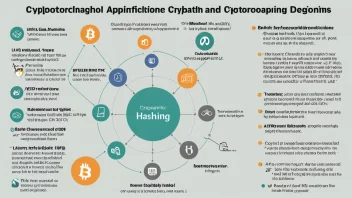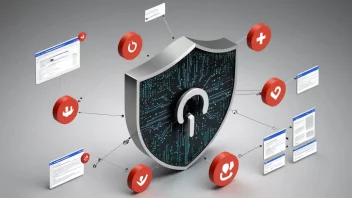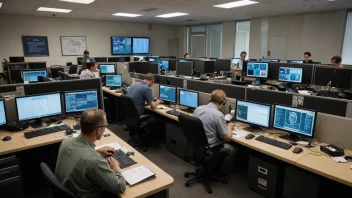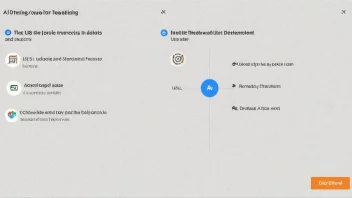The rapid advancement of technology has transformed the healthcare landscape, enabling remote healthcare services that enhance patient care and accessibility. However, this evolution also brings significant cybersecurity challenges that must be addressed to ensure patient privacy and data integrity. As healthcare providers increasingly adopt telemedicine, electronic health records, and other digital tools, the protection of sensitive patient information becomes paramount. This article delves into the cybersecurity measures necessary for remote healthcare, exploring various strategies, technologies, and best practices to safeguard patient privacy.
Understanding the Cybersecurity Landscape in Remote Healthcare
Remote healthcare, often referred to as telehealth or telemedicine, allows patients to receive medical services without the need for in-person visits. This method of care has grown exponentially, particularly during the COVID-19 pandemic, which highlighted the necessity for remote access to healthcare services. While telehealth offers numerous benefits, including convenience and increased access to care, it also exposes healthcare systems to various cybersecurity threats.
Cybersecurity in remote healthcare involves not only protecting electronic health records (EHRs) but also securing communication channels between patients and healthcare providers. Cyber threats can range from phishing attacks to ransomware, and healthcare organizations must implement robust security measures to protect against these vulnerabilities.
Common Cyber Threats in Remote Healthcare
1. Phishing Attacks
Phishing attacks remain one of the most prevalent cybersecurity threats across all industries, including healthcare. Cybercriminals often use deceptive emails or messages to trick healthcare employees into revealing sensitive information or clicking on malicious links. With the rise of remote work, the risk of successful phishing attempts has increased, as employees may be less vigilant about security protocols.
2. Ransomware
Ransomware attacks involve malicious software that encrypts an organization’s files, rendering them inaccessible until a ransom is paid. The healthcare sector has become a prime target for ransomware attacks due to the critical nature of patient data and the urgency with which healthcare providers need access to this information. In 2020, several major healthcare organizations experienced significant disruptions due to ransomware attacks, leading to compromised patient care.
3. Insider Threats
Insider threats can stem from current or former employees who intentionally or unintentionally compromise sensitive data. In remote healthcare settings, where employees may have varying levels of access to patient information, the risk of insider threats increases. Implementing strict access controls and monitoring user activities can help mitigate this risk.
4. Data Breaches
Data breaches occur when unauthorized individuals gain access to sensitive information, often due to inadequate security measures. The healthcare sector is a prime target for data breaches, with cybercriminals seeking to exploit vulnerabilities in EHR systems or access patient data through unsecured networks.
Key Cybersecurity Strategies for Remote Healthcare
1. Implementing Strong Authentication Mechanisms
To protect sensitive patient data, healthcare organizations should implement strong authentication mechanisms, such as multi-factor authentication (MFA). MFA requires users to provide two or more verification factors to gain access to systems, making it significantly more difficult for unauthorized individuals to access sensitive information.
2. Securing Communication Channels
Secure communication channels are vital for protecting patient privacy in remote healthcare. Healthcare organizations should utilize encrypted communication tools, such as secure messaging platforms or virtual private networks (VPNs), to ensure that patient information is transmitted securely. Additionally, video conferencing tools used for telemedicine should comply with HIPAA regulations to protect patient confidentiality.
3. Regular Security Training and Awareness Programs
Employees are often the first line of defense against cyber threats. Regular security training and awareness programs can help healthcare staff recognize potential threats, such as phishing attempts, and understand the importance of adhering to security protocols. Training should be ongoing and updated to reflect the latest cybersecurity trends and threats.
4. Conducting Regular Risk Assessments
Healthcare organizations must conduct regular risk assessments to identify vulnerabilities within their systems and processes. This proactive approach enables organizations to address potential weaknesses before they can be exploited by cybercriminals. Risk assessments should also include evaluating third-party vendors who may have access to sensitive patient data.
5. Developing an Incident Response Plan
Despite best efforts to secure patient data, cyber incidents may still occur. Having a well-defined incident response plan in place can help healthcare organizations respond quickly and effectively to cybersecurity incidents. This plan should outline the steps to take in the event of a breach, including communication protocols, containment measures, and recovery strategies.
Case Study: A Healthcare Organization’s Cybersecurity Journey
Background
To illustrate the importance of cybersecurity in remote healthcare, let’s examine the case of a mid-sized healthcare organization that faced significant cybersecurity challenges when transitioning to telehealth services.
Initial Challenges
Upon implementing telehealth services, the organization experienced a surge in patient registrations, but with this growth came increased cybersecurity risks. The organization encountered several phishing attempts targeting healthcare providers, leading to compromised email accounts and access to sensitive patient data.
Implementing Security Measures
Recognizing the urgent need for improved cybersecurity, the organization took several critical steps:
- Multi-Factor Authentication: They implemented MFA across all systems to enhance security.
- Employee Training: Regular training sessions were conducted to educate employees on identifying phishing attacks and adhering to cybersecurity protocols.
- Vendor Security Assessment: The organization assessed third-party vendors for cybersecurity compliance and implemented stricter access controls.
- Incident Response Plan: A comprehensive incident response plan was developed to prepare for potential breaches.
Results
Following the implementation of these measures, the healthcare organization saw a significant decrease in successful phishing attempts and a strengthened overall security posture. The incident response plan allowed them to respond effectively to minor breaches, minimizing potential damage and maintaining patient trust.
The Future of Cybersecurity in Remote Healthcare
As remote healthcare continues to evolve, so will the cybersecurity landscape. Emerging technologies, such as artificial intelligence (AI) and machine learning, are expected to play a significant role in enhancing cybersecurity measures. These technologies can help identify patterns of suspicious behavior, detect anomalies, and respond to threats in real-time.
Furthermore, regulatory frameworks and compliance standards will continue to evolve, necessitating ongoing vigilance from healthcare organizations. Ensuring compliance with regulations, such as HIPAA, will remain critical in safeguarding patient privacy and data integrity in remote healthcare.
Conclusion
In conclusion, cybersecurity is a critical aspect of remote healthcare that cannot be overlooked. As the industry adapts to the growing demand for telehealth services, healthcare organizations must prioritize the protection of patient information through robust cybersecurity strategies. By implementing strong authentication measures, securing communication channels, conducting regular training, and developing incident response plans, healthcare providers can significantly reduce their risk of cyber threats. The case study illustrates that proactive measures yield tangible results, enhancing not only security but also patient trust in remote healthcare services. As technology continues to advance, the commitment to cybersecurity in healthcare must remain steadfast to ensure patient privacy and data integrity.






